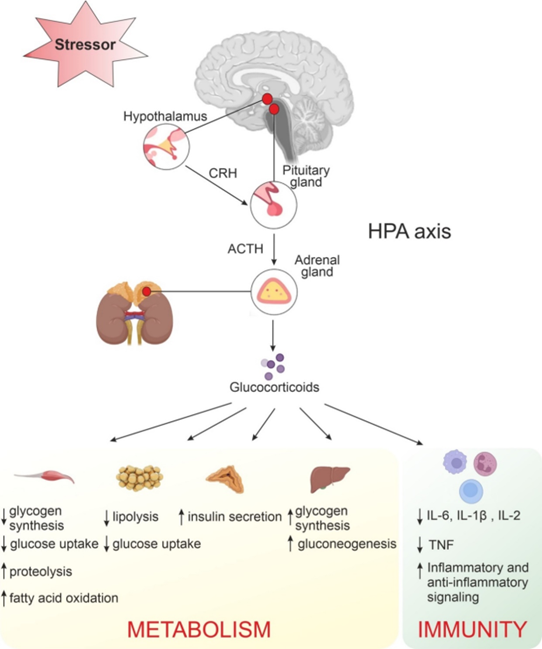Metabolic and immune dysfunctions in post-traumatic stress disorder
what can we learn from animal models?
DOI:
https://doi.org/10.17179/excli2023-6391Keywords:
post-traumatic stress disorder, metabolism, immunityAbstract
Highly stressful experiences such as terrorist attacks, domestic and sexual violence may lead to persistent pathological symptoms such as those seen in posttraumatic stress disorder (PTSD). There is growing evidence of multiple metabolic and immune disorders underlying the etiology and maintenance of PTSD. However, changes in the functioning of various systems and organs associated with PTSD are not well understood. Studies of reliable animal models is one of the effective scientific tools that can be used to gain insight into the role of metabolism and immunity in the comorbidity associated with PTSD. Since much progress has been made using animal models to understand mechanisms of PTSD, we summarized metabolic and immune dysfunction in mice and humans to compare certain outcomes associated with PTSD. The systemic effects of PTSD include chronic activation of the sympathetic nervous system (psycho-emotional stress), that leads to impairment of the function of the immune system, increased release of stress hormones, and metabolic changes. We discuss PTSD as a multisystem disease with its neurological, immunological, and metabolic components.

Downloads
Published
How to Cite
License
Copyright (c) 2023 Oleh Lushchak, Marco Orru, Olha Strilbytska, Vladyslav Berezovskyi, Andriy Cherkas, Kenneth B. Storey, Maria Bayliak

This work is licensed under a Creative Commons Attribution 4.0 International License.
Authors who publish in this journal agree to the following terms:
- The authors keep the copyright and grant the journal the right of first publication under the terms of the Creative Commons Attribution license, CC BY 4.0. This licencse permits unrestricted use, distribution and reproduction in any medium, provided that the original work is properly cited.
- The use of general descriptive names, trade names, trademarks, and so forth in this publication, even if not specifically identified, does not imply that these names are not protected by the relevant laws and regulations.
- Because the advice and information in this journal are believed to be true and accurate at the time of publication, neither the authors, the editors, nor the publisher accept any legal responsibility for any errors or omissions presented in the publication. The publisher makes no guarantee, express or implied, with respect to the material contained herein.
- The authors can enter into additional contracts for the non-exclusive distribution of the journal's published version by citing the initial publication in this journal (e.g. publishing in an institutional repository or in a book).





